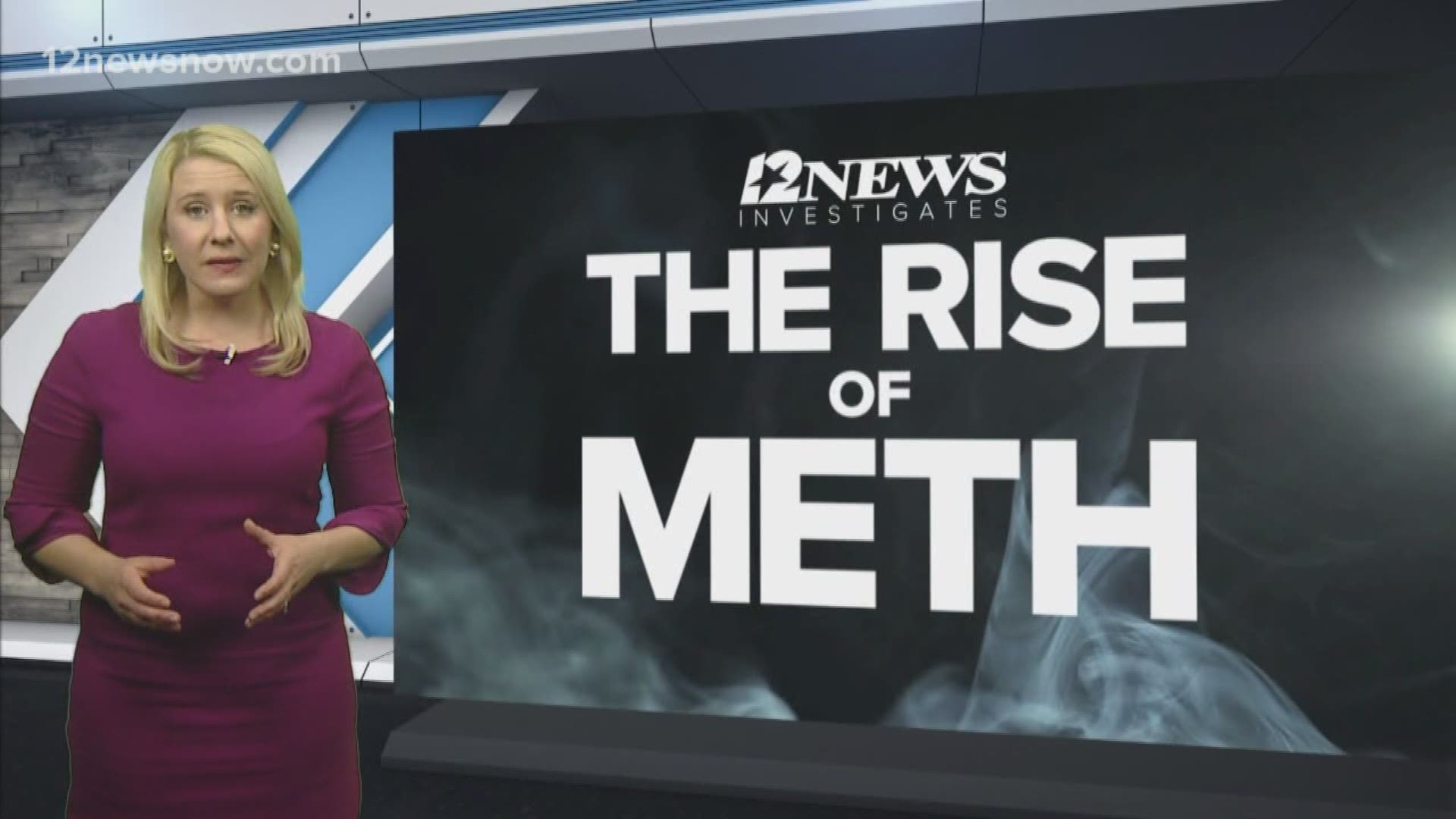BEAUMONT, Texas — Methamphetamine use is surging throughout the United States and in Southeast Texas it is more widely-used than opioids.
DEA agents say the drug is coming from Mexico where it is being mass produced. Interstate 10 makes the Golden Triangle an easy target.
In part two of a two-part series 12News reporter Lauren Hensley looks into drug treatment problems in Southeast Texas.
There is no simple or easy solution to this problem but one of the first steps is simply talking about it.
Stacy Lonadier, of Vidor, has kicked her addiction to methamphetamine and now she’s focused on her recovery.
She’s been sober for eight years but there’s something she just can’t shake.
“There is a stigma on us and I know that I am judged,” Lonadier told 12News. “I need people to see hope.”
She works at Franklin House North in Beaumont where 20 women and their children live and get the help they need.
But space at the sober living facility for women is limited and fills up fast.
“This is the problem I see working in treatment,” Lonadier said. “People don’t realize you can’t just walk in to a treatment center today and God I wish you could”
In 2017 more than 38,000 Texans sought treatment for addiction.
Of all the drugs they sought treatment for amphetamines were second behind those seeking treatment for marijuana.
- All substances - 38,819
- Alcohol only - 5,462
- Alcohol with secondary drug - 4,421
- Heroin - 6,341
- Other opiates - 1,833
- Cocaine (smoked) - 1,359
- Cocaine (other route) - 1,498
- Marijuana - 9,166
- Amphetamines - 7,586
- Other stimulants - 13
- Tranquilizers - 684
- Sedatives - 53
- Hallucinogens - 46
- PCP - 276
- Inhalants - 17
- Other/Unknown - 64
When Misty Nance, a recovering addict from Orangefield, found spot in a rehab she had to travel 300 miles away to Coprus Christi.
“A month and a half and finally, I called from August until September 26th,” Nance said. “I was scared to death when I got on that Greyhound. I thank the good Lord above.”
The best course for treatment depends on the client according to Beth Crabtree, program supervisor at the Texas Department of Criminal Justice’s Spindletop Center.
The Spindletop Center provides outpatient treatment center.
That’s one option but things get complicated if you’re an addict with a medical or mental health issue.
“Some agencies very strict because they aren’t equipped to deal with that,” said Lonadier. “There’s a limited amount of help that’s around here.”
If you need to detox there’s only one place available in the Golden Triangle and to be considered for it there’s very specific criteria.
“That is an issue that is hard for myself and all the other counselors in this area we do not have an adequate detox,” Crabtree said.
Even with court-mandated detox and rehab many addicts end up right back in front of assistant district attorney Krispen Walker.
Walker sees a lot of repeat offenders and says it’s an “uphill battle.”
It’s a battle that can’t be won alone.
“People gave me a chance and I know others who have given us a chance,” Lonadier said. “They need to get people like me a chance to redeem themselves. That’s what we have to do.”
After spending 119 days in rehab Nance got sober and is now looking toward the future.
“Did that woman have goals 119 days ago,” Nance wonders. “No, wait year… 6 feet under.”
But she has plans for her future mentioning plans to go back to welding school.
With eight years and counting Lonadier is continuing on her sober journey as well.
“In my position in my small community and where I live… People need to see hope, they need to see how God can transform your life and know they are not alone,” Lonadier said.
The Spindletop Center is working to create life-changing opportunities. The center started a program that allows offenders to attend a trade school at no cost.
Other recovery agencies meet on the third Tuesday of every month to discuss how to get recovering addicts back into the work force.

